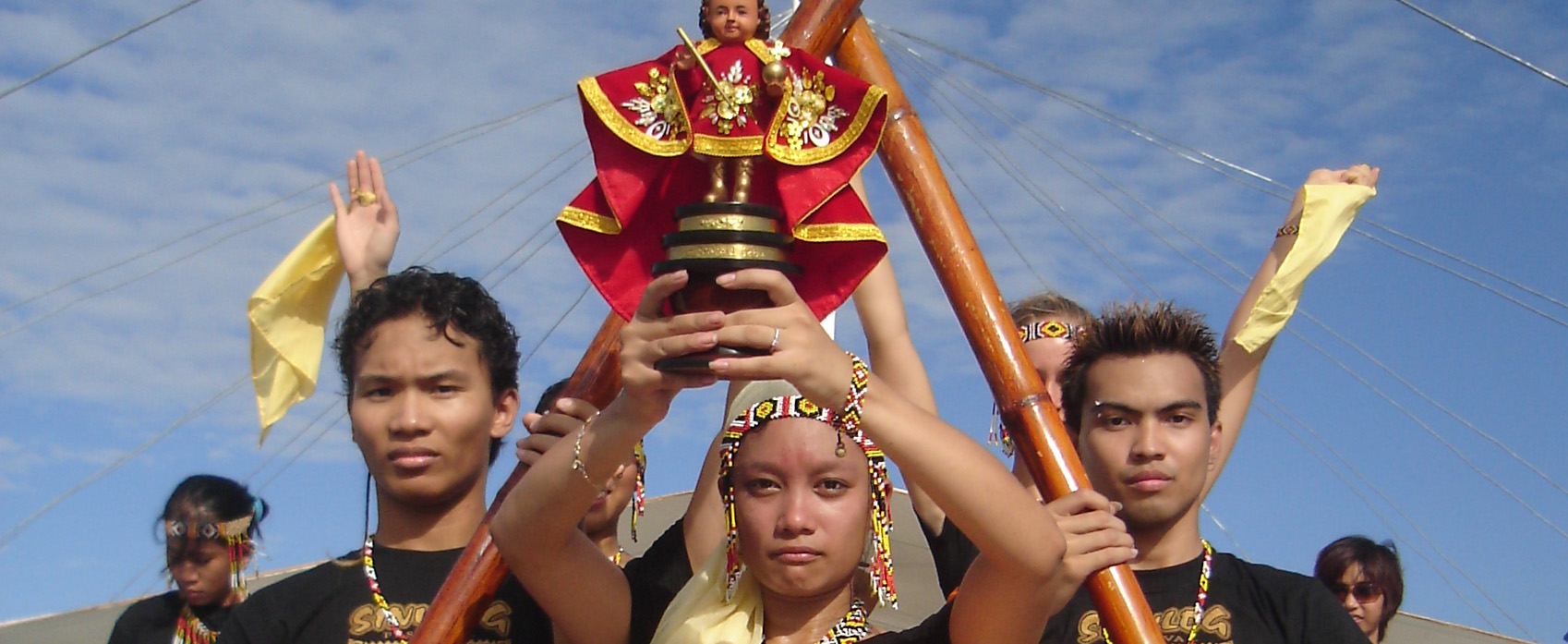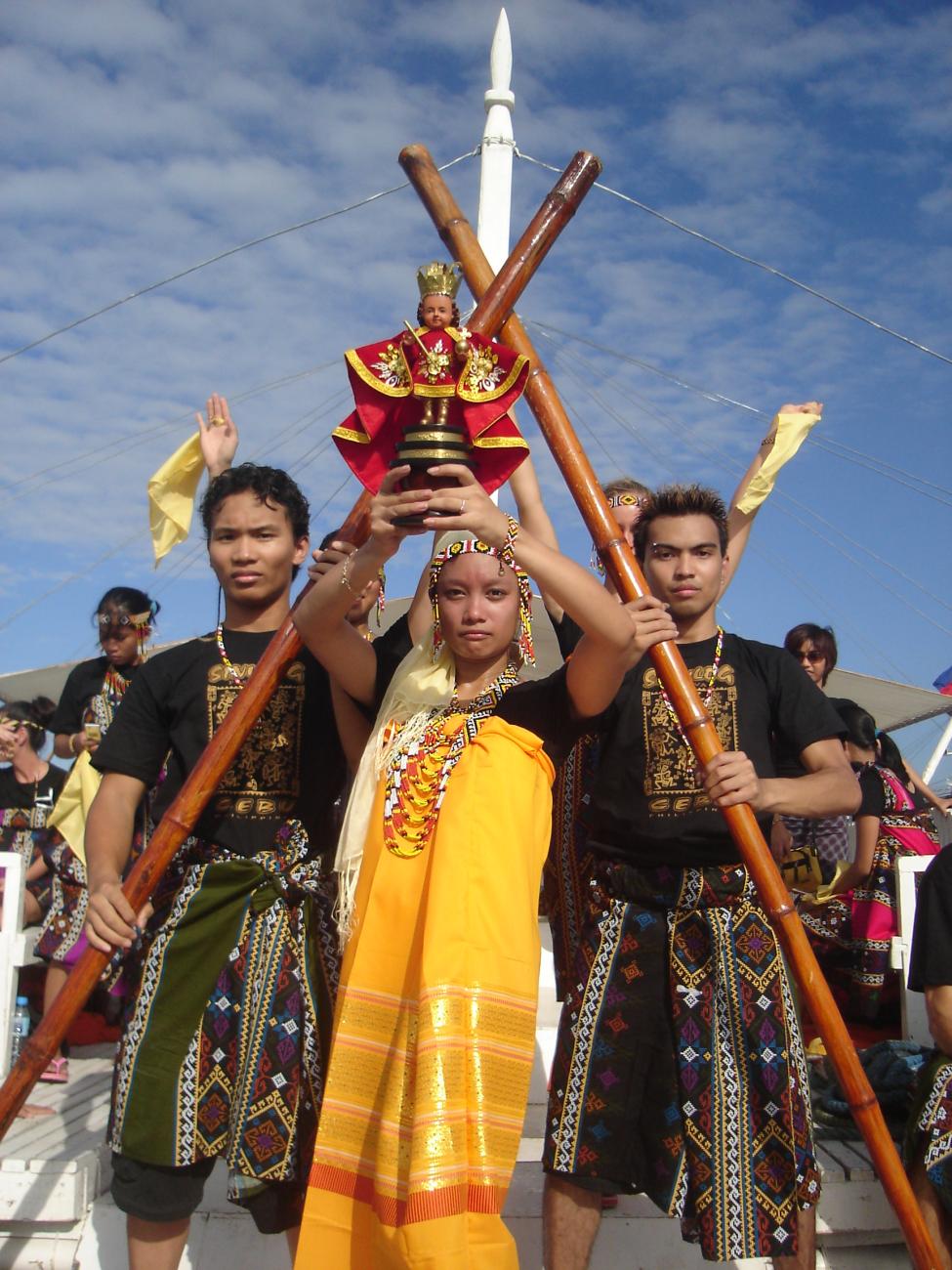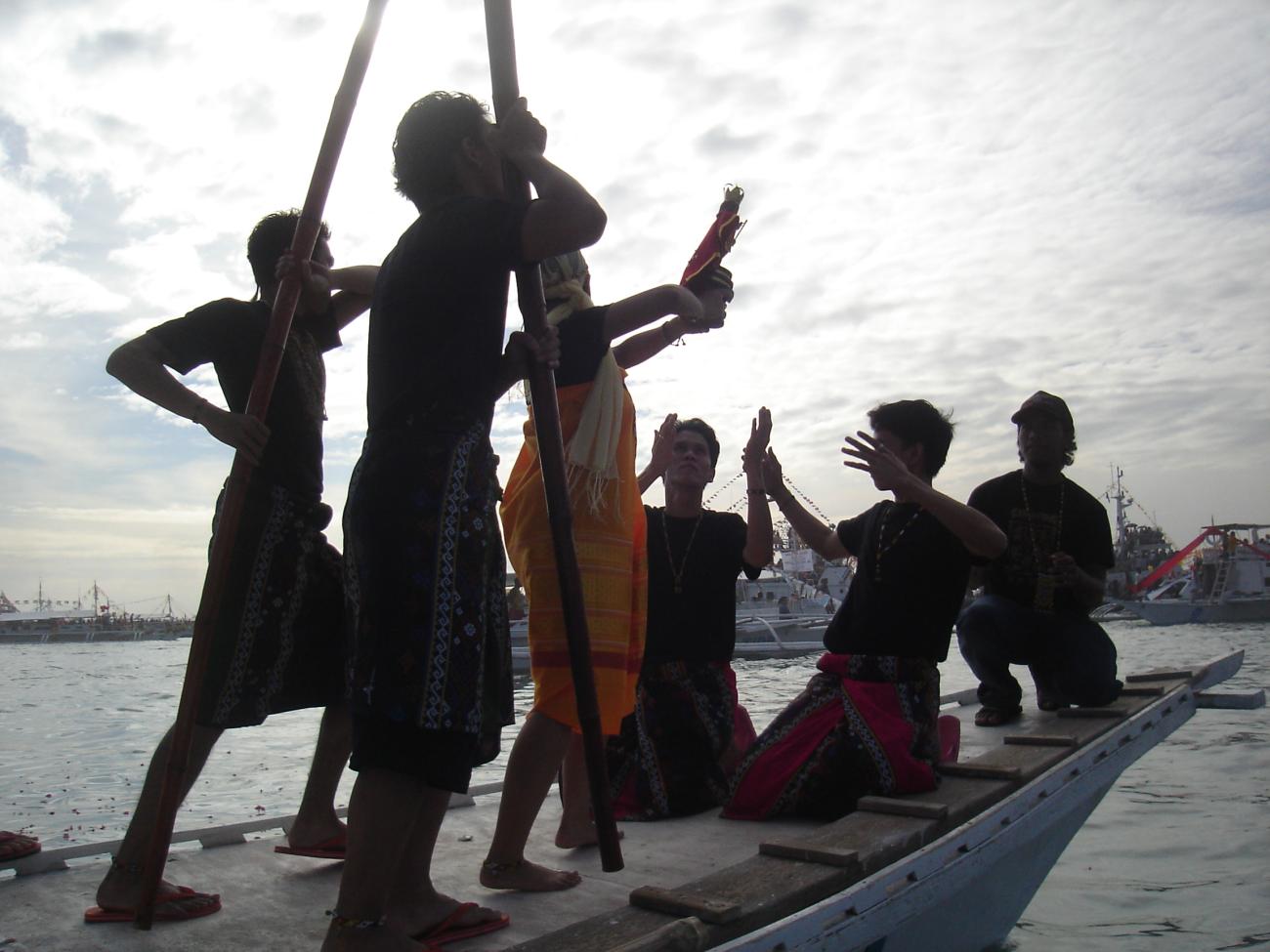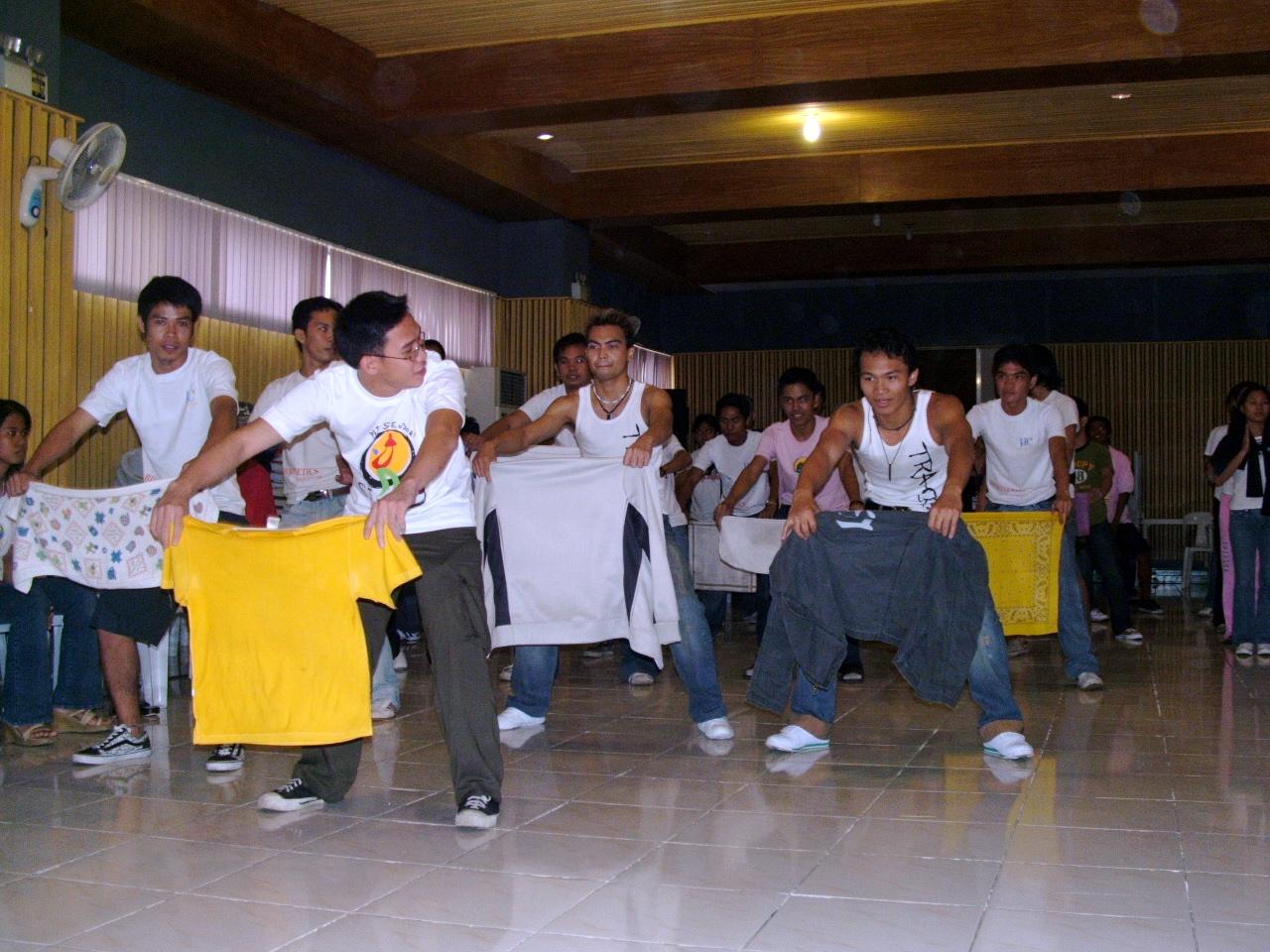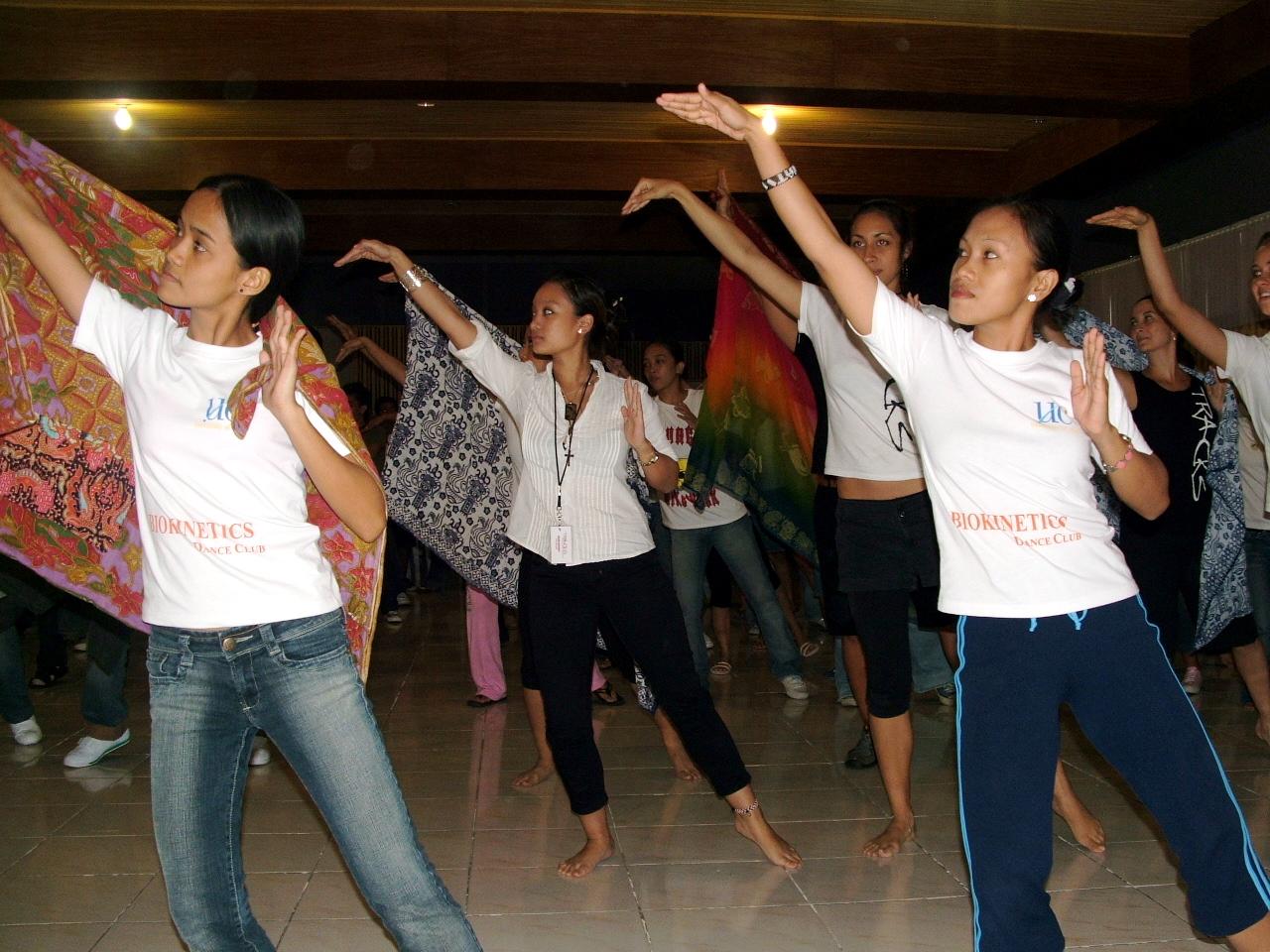Philippines Cultural Visit
Text
Philippines
January 6 - 25, 2007
‘exchange’ through interactions
Tracks has worked with the Filipino community in Darwin since the late 1980’s. While based at Brown’s Mart they had consistent contact with Filipino Cultural Activist Betchay Mondragon (who was the multicultural artist in residence). She was instrumental in many of the community cultural links that Tracks made in the early days. She was a key collaborator in the Sticks ‘n’ Stones project (2002), and was the Tracks Multicultural Artist in Residence (2003). In this position Betchay made stronger links between Tracks and the Filipino community and many of our key dancers come from this community, such as: Marko Taopo, Erwin Fenis, Vera Tabuzo, Corina Nichols, and Estelle Quindara.
It became critical for the development of Tracks to gain a greater understanding of one of its key communities. In discussions with Betchay, it was clear that we needed to go to the Philippines and see the living culture, to attend Festivals and arts events, meet artists and forge new links with the Filipino community. Betchay was engaged to coordinate the trip as an exchange, intended to expand Tracks artists’ understanding of Filipino culture and to inform future Tracks performances while introducing Tracks as a performing arts company with a strong commitment to telling the stories of this south-east Asian region.
Filipino culture is very performative
As Betchay stated, the Filipino culture is very performative, and that it would be expected that we ‘exchange’ through interactions. To do this we needed to take some dancers with us. This was an interesting issue, as Tracks does not have a stable of dancers who carry repertoire. We made the offer to our youth dancers who we had developed throughout the entire 2006 program, four of the six being Filipino, as well as our Dance Animateur Julia Quinn, (Filipino Irish). To round out the group, we invited Julia Gray (PNG), who we had been mentoring through her Pacific Island dance company Sunameke, and who was a key collaborator in the 2006 performance Without Sea.
This group gave us access to: our youth dance performances, Sunameke Pacific Island dancing, break dancing, and contemporary dancing. We created a series of possibilities that allowed us to give lectures, presentations, short dance examples, individual dance pieces, workshops in a variety of styles, and other interactions.
This cultural visit opened our eyes to many aspects of Filipino living. The many years of occupation, (Spanish, Japanese, American), the diverse regions and cultures, its island and ocean aspects, the high populations, the ever-present Filipino Catholicism, the constant shifts and changes, (nothing seems solid or permanent), the careful protocols and exchanges, the respect that people have for their own culture, the love everyone has of dancing, (as evidenced by the many thousands of volunteer participants and audiences found everywhere).
Creative Personnel
Delegation: Tim Newth, David McMicken, Fiona Carter, Julia Quinn, Julia Gray, Erwin Fenis, Vera Tabuzo, Kelly Beneforti, Corina Nichols, Imanuel Dado, Estelle Esperanza Quindara, Betchay Mondragon
Activities
Subic
- Fly from Darwin to Subic. Tour of region. Subic airport was once occupied by the American forces and was turned back to the government during the 80’s.
- Visit Indigneous Aeta Natives, Pamulaklakin Forest Trail Indigenous Village, and watch some dancing, and other cultural activities
Manilla
- Travel by bus to Manilla, population around 20,000,000
- Explore Manilla and its cultural centres including:
- Cultural Centre of the Philippines (CCP), built during the Marcos regime to be able to present wotld class performances. Meet key personnel. Watch company class and rehearsal of the Ballet Philippines.
- Visit Philippine Education Theatre Association (PETA). This was Betchay Mondragon's training centre. We shared performances and an interaction. This was very important for Betchay to bring people she has worked with in Australia back to her ‘homeland’. It was a testimony to her training, and the PETA vision of expanding their influence through cultural activism.
- Dinner at Zamboanga restaurant: Dinner show cultural dancing.
Cebu
- Travel to Cebu City on Super-ferry. With the Philippines being made up of 7,107 islands, ferries are the way most locals travel.
- Interaction - University of Cebu – Biokinetics students, studying to become physical education (PE) teachers, (in the Philippines dance is taught in schools as part of the PE program). The students at the University study only the traditional dances of the Philippines and they taught us some of these. An exchange of performance pieces followed.
- Go to local Television station to see dancing (also some participation on TV).
- Perform at Cebu Town Centre, World Dance Performances Festival to almost 3000 people.
- Attend Lamaih restaurant, for a cultural presentation.
Bohol Island
- Travel via fast craft ferry to Tagbilaran – Bohol Island
- Met with Gardy Labad, Director of the Loboc Museum of Music and Heritage. He was the Director of PETA when Betchay was resident, and he was her mentor. Originally Betchay suggested meeting Gardy because of his particular manner in inspiring people, and because he was now resident in a small remote part of the Philippines and creating amazing work with locals.
- Interact with the Diwanag Dance Theater, initially observing them in rehearsal and then watching a performance of the company.
- Visit nature park, entertained by a ‘drag’ performance
Valencia
- Go to Valencia and perform with Diwang Dance Theatre at 11.00pm
- View video footage of Gardy’s past work,
- Travelled up the river to see where he wanted to do his next work
- See Tarsiers – one of the smallest known primates.
- Visited the Loboc Children’s Choir, (angels) at the Church of San Pedro, the second oldest church in Bohol, originally built in 1602, and had exchange with them. Taught Youth dance workshop at Dauis, and watched singing and dancing. Drank hot chocolate.
- Visit the Chocolate hills.
- Visit the Church of Our Lady of the Immaculate Conception in Baclayon, considered to be one of the oldest churches in the Philippines, with its egg white walls
- Ran a full day workshop for Physical Education Teachers. This is where dance is taught in the schools. They have a very regimented curriculum that only allows them to teach set dances. Our workshop was experimental for them, exploring the concepts of modern dance. Many of the teachers felt that their own way of teaching traditional dance was becoming stale and that they wanted to find ways of fusing new ideas. It was very different to our Australian, (or Western) manner where we take creative expression and freedoms as given.
We then had another exchange with Diwanag dance company,
Cebu
- Return to Cebu
- Visit Betchay’s mother, Esperanza, and have a large family dinner. Then create and rehearse dances we were going to perform for the Sinulog Festival Parade.
- The Sinologue Festival was a prime reason for our timing of the trip. Cebu is the second largest Island and the Sinulog festival is one of the grandest, most distinguished and most colourful festivals in the Philippines. The major festival is held each year on the third Sunday of January in Cebu City to honour the Santo Niño, or the child Jesus, who used to be the patron saint of the whole province of Cebu. It is fundamentally a dance ritual which remembers the Filipino people's pagan past and their recognition of Christianity.
- The festival features some of the country's most colourful displays of ceremony and pageantry: participants clothed in bright-coloured costumes dance to the rhythm of drums and native gongs. The streets are packed with vendors and pedestrians all wanting to witness the street-dancing. Smaller versions of the festival are also held in different parts of the province, also to celebrate and honour the Santo Niño.
- Recently, the cultural event has been commercialised as a tourist attraction and instead of traditional street dancing from locals, Sinulog also came to mean a contest highlighting groups from various parts of the country. The Sinulog Contest is held in the 15,000 seat Cebu City Sports Complex. We were extremely privileged to firstly (in full traditional costume) dance in the Parade leading from the Basilica, go on our own boat in the Fluvial Procession, dancing for literally hundreds of thousands of people all lined up along the waters edge, perform for people in restaurants, and then in the afternoon, in prime seats in the Sports complex, watch the Performances of each group as they parade through the streets, into the complex, onto the main stage for their extravaganza, and then back into the streets.
- We went on a heritage tour featuring the century old Basilica Minore del Sto Niño as well as the Museum, Magellan’s Cross which was encased in a box to preserve its historical and cultural importance, Cathedral Church and Museum, Rajah Humabon park – legendary leader of Cebu, Fort San Pedro, Running tour at Colon’s St. – the oldest street in the country, Cebu Heritage Monument, Flag Avenue in Jones, Capitol Building – a remnants of American culture and house the government officials in Cebu, going up to a hilly portion of Cebu - Taoist Temple.
Mactan
- Going to the island of Mactan, passing through the Cebu International Convention Centre (CICC) at Mandaue City, and the Marcelo Fernan Bridge – which connects the island of Cebu and Mactan. Passing the export processing Zone – where thousands of workers earned their living. Arriving at Tambuli West Resort for lunch with serenaders. Mactan Shrine, visiting the Lapu-Lapu Monument and Magellan’s marker where he fell at the infamous 1521 battle of Mactan. Visit Alegre Guitars (where the island is noted of its craftsmanship in guitar and ukelele making), Town square, the Shrine of Virgen de Regla – town’s patron, and market square.
Tracks 2007
Artistic Directors: David McMicken and Tim Newth
General Manager: Fiona Carter
Dance Animateur: Julia Quinn
Youth Dance Animateur: Erwin Fenis
Administrative Assistant: Skye Raabe
Bookkeeper: Julie Ann Stark
Development Consultant: Suzanne Fermanis
Committee Members: (Chair) Jill MacAndrew, (Vice-Chair) Jackie Wurm/David Taylor, (Treasurer) Glenn Bernardin, (Secretary/Public Officer) Traci Keys, (Ordinary Committee Members) Ken Conway, Nick Papandonakis, Donna Quong, (Ex-Officio Members) David McMicken and Tim Newth
Public Fund Trustees: Rev. Steve Orme, Dr Anita Toth, Paul Wan
Photos
Videos
Explore Further
Responses
“The Tracks Company project in the Philippines was for me a once in a lifetime opportunity and of priceless value to my development as a dancer and a constructive member of the Northern Territory arts and wider community. I feel that the skills I have learnt as a performer and a leader give me greater confidence to share my knowledge in dance with others who too have a passion for dance; an art form for which I have now all the greater respect having explored how it contributes to a starkly different society to my own.” Kelly Beneforti

